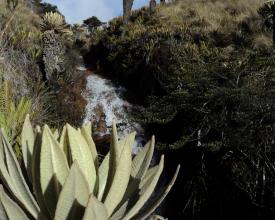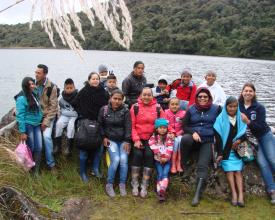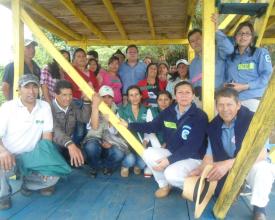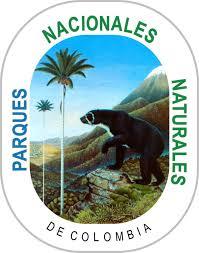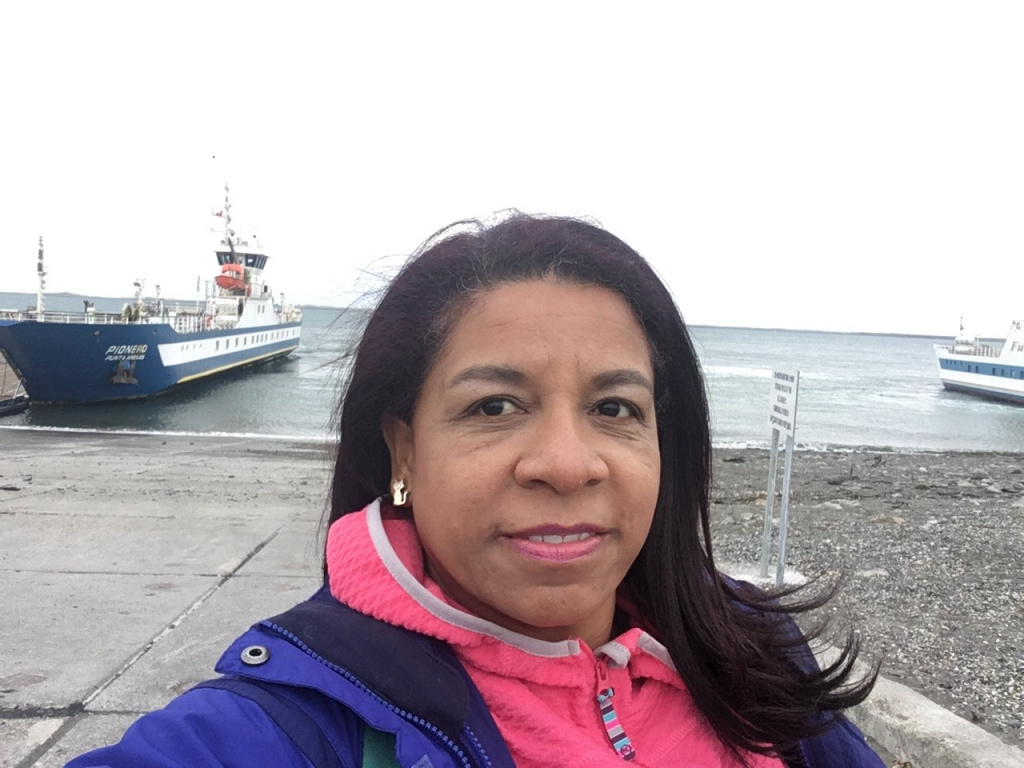

For a long time, the Galeras Flora and Fauna Sanctuary 's ecosystems suffered from the negative effects of human population growth in the surrounding rural/urban areas. This considerably affected both the ecosystem goods and services offered by the Sanctuary and its connectivity with other protected areas (and its zone of influence). However, since 1998, and with the implementation of the"Policy for Social Participation in Conservation", it was possible to promote several initiatives that contributed to improve representativeness and ecological connectivity under forms of shared governance. In addition, thanks to the commitment of peasant communities, local authorities, private landowners and other stakeholders, progress has been made in the creation of local reserves and civil society nature reserves, which are currently making an invaluable contribution to the conservation of strategic ecosystems.
Context
Challenges addressed
The ecosystems of the Galeras Flora and Fauna Sanctuary have been subjected to strong pressures such as:
- Logging for firewood extraction, timber for construction.
- Contamination of water sources.
- Indiscriminate hunting.
- Repeated forest fires, all associated with poor agricultural practices and the expansion of the agricultural frontier.
The combination of all these elements seriously affected both the ecosystem goods and services offered by the Sanctuary and its connectivity with other protected areas and surrounding areas.
Location
Process
Summary of the process
The natural reserves of the civil society contribute from the local level to the National System of Protected Areas and represent one of the main management actions in the framework of the environmental management of the buffer zone. The Galeras FFS has developed both components under the auspices of the various planning and management figures that exist in the country (watershed management, municipal development plans and schemes, among others), as well as from the proposals and strategies in the political, social, economic and environmental management of the territory.
This has led to a decrease in the occurrence of fires, the number of hectares affected, the reduction of firewood and timber extraction activities and the transformation of forest relicts on private properties into areas for agricultural and livestock production. Finally, this situation shows that the joint work between the community and institutions is a strategy that allows generating an important synergy with the communities as a central axis in the processes of self-control and conservation.
Building Blocks
Proposed Buffer Zone of the Galeras FFS
It is very important for the Galeras FFS to have environmental management of the buffer zone. This process began in 2005, achieving significant results such as the proposed delimitation, zoning, and regulation of 10,615 h as a buffer zone, 38.2% of which correspond to protection zones. The High Andean and Andean Forest Sanctuary is cited here as a precedent for strategic conservation connectivity. Through this, a technical committee was formed where a dynamic and management process materialized, in which the active participation of all stakeholders has been encouraged, in addition to the incorporation of all conservation strategies under different social, technical, political and environmental work schemes of the territory.This practice generated an integral management, which has represented a challenge in the conservation of the Galeras FFS and its area of influence, but also an opportunity for the management and articulation of efforts around conservation, something that has allowed to generate trust among the actors, greater technical coordination, joint planning and sustainable co-responsibility over time.
Enabling factors
- Existence of the sustainable development project Ecoandino World Food Program. In this regard, the participation of 23 villages in the area of influence of the Galeras FFS and the signing of 900 socio-environmental pacts are noteworthy.
- Construction spaces with community and institutional actors appropriate for the development of the proposed delimitation and zoning of the area.
- Implementation of projects of cooperating agencies such as AECID, GEF, World Bank and Patrimonio Natural.
Lesson learned
The environmental territorial planning of the buffer zone was a participatory process in which public entities, the environmental authority (CORPONARIÑO), the municipal administrations that have jurisdiction over the protected area, other state entities, and the community in general with interests in the surrounding areas worked harmoniously and jointly with the objective of conserving and preserving the supply of ecosystem goods and services provided by the Sanctuary.
Cofinancing from international cooperation projects such as: AECID, GEF-World Bank Natural Heritage Project, implemented in the protected area and its zone of influence, allowed the Sanctuary to obtain a higher degree of credibility and governance over the territory, achieving recognition of the protected area at different scales. These contributions were reflected in the area's management effectiveness.
Formation of Civil Society Nature Reserves and other conservation strategies
The Civil Society Nature Reserves (RNSC) for the Galeras Flora and Fauna Sanctuary is a very important management strategy within the framework of the environmental management of its buffer zone. This process has been carried out since the 1990s in the Municipality of Pasto (Mapachico), and in 2000 with the Social Participation Policy through the ECOANDINO sustainable development project and sustainable systems for conservation.
This resulted in a direct incidence of the peasant civil society in the voluntary conservation and liberation of areas projected to be expanded for productive processes.
At present, this voluntary conservation strategy has more than 200 RNSC and conserves more than 600 ha of high Andean and Andean forest ecosystems in the context of microfundios in the department of Nariño, representing in the area, with a buffer function, an alternative for the continuity of the values under conservation.It has also become a strategy of social fabric where spaces are promoted for the exchange of knowledge, traditional knowledge, products, seeds, creation of bonds of trust, dialogues, where the main actors are the families who are friends of the Galeras Flora and Fauna Sanctuary.
Enabling factors
- Voluntary conservation and release of projected areas to be expanded for productive processes by rural communities.
- Sensitization of the communities on conservation and ecosystem services.
- Family participation in the environmental planning of their properties.
- The financing of projects that allowed to leverage the strategy of conformation of the RNSC.
- The credibility of the communities in the institution (PNN-SFF Galeras).
Lesson learned
Community conservation processes are successful in proportion to the degree of commitment and awareness of the families involved.
The CSER for the Galeras Flora and Fauna Sanctuary is a very important management strategy in the framework of the environmental management of its buffer zone.
Impacts
Environmental impacts:
- Release of projected areas for expansion of productive processes.
- Recovery of transformed ecosystems.
- Recovery of stream banks.
Social impacts:
- Integration of the community in the conservation process of the protected area.
- Articulation of the rural civil society in the voluntary conservation.
- Active participation of women in the conservation processes of the protected area in question.
Finally, the consolidation of an ecotourism sector in the Telpis sector generated additional economic income for the communities involved in the provision of services such as guiding, horse rental, and food.In fact, the creation of this economic alternative has also had an impact on the conservation of the protected area because it has prevented the expansion of the agricultural frontier, thus promoting the conservation of the surrounding lands.
Beneficiaries
The communities settled at the foot of the Galeras Flora and Fauna Sanctuary, developing a process of education and sensitization that allows them to exercise control over the protected area.
Sustainable Development Goals
Story
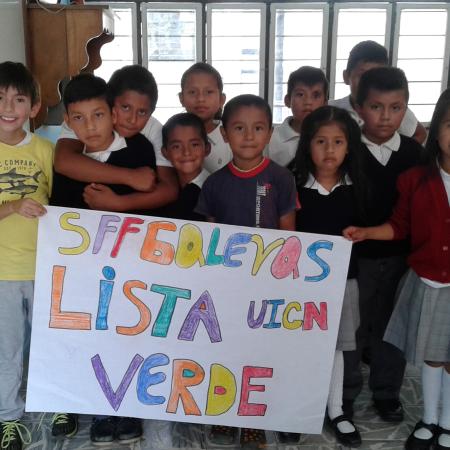
The participation of various institutions coordinated by the Ecoandino project has represented for National Parks the possibility of creating a relationship of complementarity and integration within the principles proposed from the policy of "Parks with the people", which allowed to generate spaces to guide public actions favoring the impact of actions around conservation, to strengthen commitments and effective agreements between the various environmental authorities and between them and the communities, strengthening the co-responsibility of each of the institutions according to their mission and scope of intervention.
The training and environmental awareness processes, the organizational strengthening and the rescue of solidarity actions contemplated in the different projects and processes carried out by the Galeras FFS together with different actors, contributed significantly and in a high percentage to the reduction of pressures and the conservation of the protected area.
Note:
The systematization of this case was carried out by the International Union for Conservation of Nature (IUCN). The case was highlighted in a survey to identify Complementary Conservation Strategies (CCS) in Colombia, carried out by ICLEI South America in 2018. For more information: http://sams.iclei.org/es/que-hacemos/proyectos-en-ejecucion/areas-protegidas-locales/colombia.html
The IUCN and ICLEI actions were within the scope of the regional project Protected areas and other area-based conservation measures at the local government level , and were financially supported by the Deutsche Gesellschaft für Internationale Zusammenarbeit (GIZ) GmbH. The regional project is implemented by the Ministries of Environment of Brazil, Colombia, Ecuador and Peru, and GIZ, in cooperation with ICLEI and IUCN. The regional project is supported by the German Federal Ministry for the Environment, Nature Conservation and Nuclear Safety (BMU) within the scope of the International Climate Initiative (IKI).

